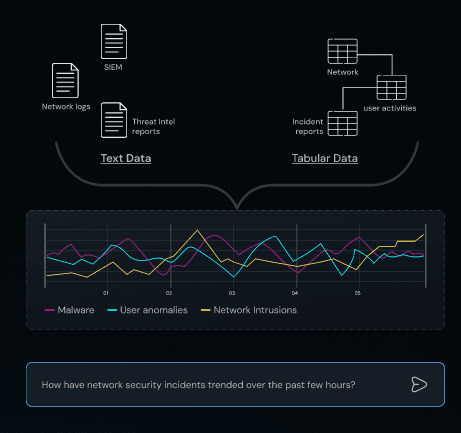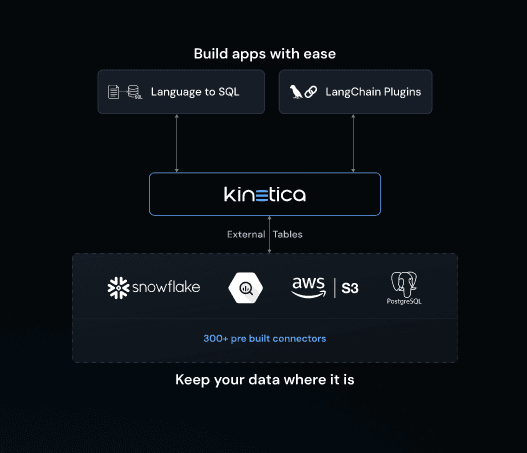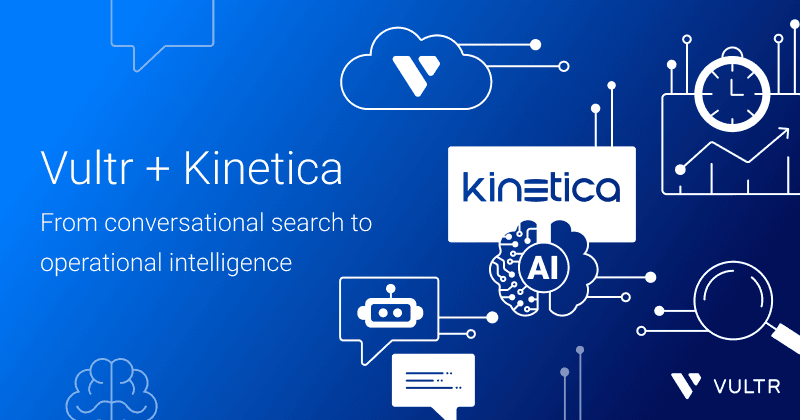We're excited to feature this guest post from Hari Subhash, Senior Director of Marketing at Kinetica! Read on to learn how they're helping organizations build next-gen AI solutions that deliver actionable intelligence in seconds.
These days, I rarely Google. Instead, I turn to ChatGPT for answers. Within seconds, it delivers a nicely summarized response that I can refine with follow-up questions. This is the power of conversational search – a massive leap from traditional search that requires users to sift through pages of information. However, despite its advantages, Conversational Search is limited; it can’t derive insights from tabular data.

Retrieving ad-hoc information from real-time data is challenging
Retrieving ad-hoc information from real-time data is more complex. Traditional business reporting is slow and static, often taking minutes to hours to execute queries against operational data. On the other hand, Generative AI (GenAI) demands immediate responses to analytical requests against text and tabular data sources.
But executing ad-hoc analytic requests against structured data is challenging:
- Crafting the correct query: A GenAI application needs to craft accurate SQL queries to fetch information required from tabular data to answer operational questions. This requires knowledge of the database’s SQL syntax and the enterprise’s data architecture.
- Security: Enterprises implement strict access controls, but predicting every possible query a user might ask makes it challenging to secure data access preemptively.
- Speed: Traditional big data solutions rely on heavy tuning for pre-defined queries, but the user expects real-time answers in a conversational setting. Existing tools can’t keep up with this unpredictability and performance demand.
- Fusing insights from text and data: Broadly speaking, there are two sources of information: text-based sources (company docs, operational logs, proprietary text sources, etc.) and tabular sources (operational, real-time data). A GenAI app must seamlessly combine information from both to deliver operational insights.
- Range of analytic capabilities required: Predicting every question a user might ask is impossible. Some queries may require specialized analytics like spatial, time series, or graph analysis.
Build GenAI apps that deliver operational intelligence With Kinetica and Vultr
Several solutions today can draw insights from text-based sources. However, only Kinetica has the full range of capabilities required to draw insights from both real-time text and tabular data simultaneously.
With Kinetica, you can perform ad-hoc retrieval against vast volumes of real-time text and tabular data in seconds. This performance extends to a wide range of analytic capabilities, including spatial, time series, graph, and vector, making it the ideal retrieval engine.
High-performance retrieval requires the proper infrastructure. Vultr’s cloud platform delivers the power needed to support Kinetica’s unique demands. Vultr is robust and cost-effective, making it an ideal choice for building and scaling retrieval systems for GenAI.

Language to SQL with security
An LLM does not have any context about your data. It needs to be provided with this information securely to generate the queries required to draw insights.
Kinetica is an enterprise-grade database that guarantees security down to rows and columns. This security extends to retrieval requests made by a GenAI application. Inside Kinetica, administrators can catalog the data, describing tables, columns, and relationships.
When a user types in a question, the application sends Kinetica a request for a data context. Kinetica dynamically crafts the context in a way that respects enterprise security requirements down to each cell of data, exposing only the data that the person asking the question has rights to in its answer. This ensures that LLMs can frame queries correctly while guaranteeing that sensitive information is not exposed to the wrong user.
Analytics on real-time data in seconds at a fraction of the cost
Kinetica is a real-time GPU-accelerated database that can ingest and process vector (text) and tabular data within seconds. Unlike other solutions, data can be analyzed as it is ingested into Kinetica. As a result, Kinetica is able to deliver insights on the freshest data. And this performance does not have to come at a higher cost. Benchmarks show that Kinetica delivers the same performance as other solutions like Databricks at half the cost on Vultr.
Wide range of analytic capabilities
Kinetica is the only real-time database in the world that can handle operational, spatial, time series, graph, and vector analytics under a single, easy-to-use relational framework. This makes it the ideal solution that is easy to build on and can handle the unpredictable range of analytic requests required for a GenAI app.
Keep your data where it is
Don’t want to move all your data to Kinetica? That's ok. You can keep your data where it is, and Kinetica can use its external tables feature to query the data to deliver relevant information to your app.
Our customers are seeing great value from copilots built using Kinetica
Today, a major US telco uses Kinetica as the retrieval engine for a copilot that helps engineers troubleshoot network problems using English. The app has significantly improved productivity and reduced the time taken to resolve network issues. Also, a US government agency is using a copilot built on Kinetica to investigate real-time flight data using English. This copilot crunches through millions of real-time records in seconds to deliver insights to analysts. We are also currently deploying proof of concept applications at several large enterprises and government agencies.
These organizations chose Kinetica because we can help them unlock the full potential of Generative AI for their enterprise's data. Join them in building apps that deliver actual operational value with Kinetica. You can reach us at talk@kinetica.com.

